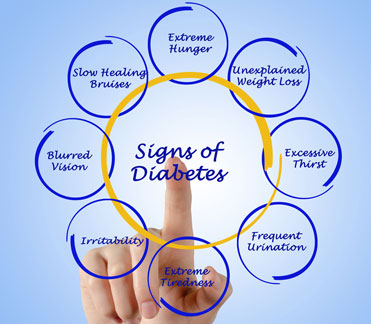-
- Schedule an appointment
-
My account My Portal login
Looking for your health records?
You can access your records and more by logging in or signing up with Dignity Health.

Almost 26 million children and adults in the United States live with the lifelong disease of diabetes. When you have diabetes, you either don't produce enough or don't correctly use insulin. Insulin is a hormone that converts sugar, starches and other foods into energy, and when it is not functioning properly it causes your blood sugar levels to be too high. With proper treatment, those with diabetes can live an active and full life.
Diabetes Lifestyle Training Services provides comprehensive education and support for individuals and families within our community affected by diabetes and pre-diabetes. Our mission is to enhance diabetes self-management skills, allow people to be confident in their ability to manage their disease, improve their quality of life, and prevent costly and life altering complications of diabetes. Our staff consists of Certified Diabetes Educators who are registered dietitians and registered nurses, specially trained in the management of diabetes. We are committed to helping each person that walks through our door, wherever they are in their journey with diabetes, to improve their health and quality of life.
There are several types of diabetes, but the two main types are type 1 and type 2. In both types there is an insulin problem, but for different reasons.
The A1C test is a blood test that provides information about a person's average blood sugar over the past 3 months. The A1C test measures the amount of glucose (sugar) on your red blood cells. You do not need to be fasting to have an accurate A1C lab completed.
 The A1C provides the “big picture” of overall glucose control. Knowing this number will help guide you and your health care team to successful diabetes management.
The A1C provides the “big picture” of overall glucose control. Knowing this number will help guide you and your health care team to successful diabetes management.
Your A1C goal is determined by you and your health care provider. For someone who does not have diabetes, A1C below 5.7% is considered normal. The American Diabetes Association recommends an A1C goal of less than 7% for those with diabetes. Your goal may be slightly higher or lower.
Tips for checking blood sugar:
Test accuracy and comfort are the goals!
If you would like to work with an educator to improve your diabetes control, please talk to your doctor about participating in these classes. Ask your doctor’s office to download the order form. If you would like, our front office can contact your provider on your behalf.
Upon receipt of all materials, we will contact you to discuss our classes and services. Your physician will receive progress notes as you progress through the program. Our comprehensive Diabetes Self-Management training is covered by most insurance plans, including Medicare Part B.